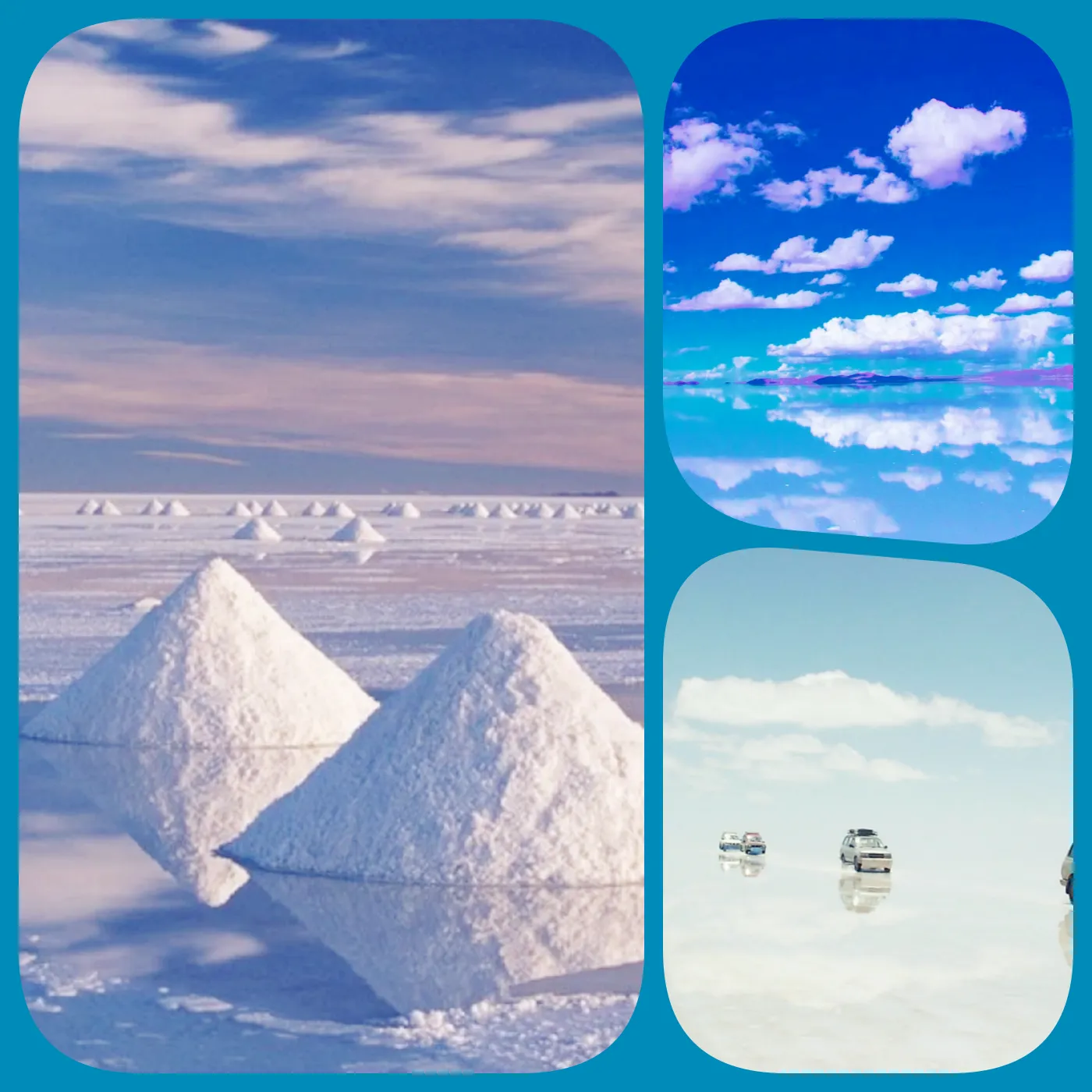
Salar de Uyuni – The World’s Largest Salt Flat
Nature has a way of surprising us with its wonders, often revealing things that seem like they belong only in fairy tales. High in the Andes Mountains, at an altitude of over 3,650 meters, lies a vast open salt expanse that seems to stretch endlessly: the Salar de Uyuni, the world’s largest salt flat.
Located in the southwest of Bolivia, Salar de Uyuni is undoubtedly one of the greatest gifts Mother Nature has bestowed upon this country. This massive salt flat is 15 times the size of Singapore. Over 40,000 years ago, this area was part of a prehistoric lake. As the water evaporated over millennia, it left behind an immense bed of salt, forming the stunning Salar de Uyuni we see today.

Salar de Uyuni is not only the largest salt flat on the planet but also 25 times the size of the famous Bonneville Salt Flats in the United States. Here, locals harvest salt in a traditional way: they pile the salt into mounds and wait for it to dry as the water evaporates. The dried salt is then processed with iodine before being packaged. The annual salt production is around 25,000 tons, a tiny fraction compared to the 10 billion tons of salt reserves that exist in the area. Local residents also offer tourists a chance to learn about the salt-making process and often sell small packets of salt as souvenirs for a bit of extra income and good luck.

One of the unique features of Salar de Uyuni is its salt hotels. After exploring the vast salt flats, visitors can find unique accommodations built entirely from salt blocks — from the walls to the furniture — providing a one-of-a-kind experience and a cozy place to rest after a long day.
Visiting Salar de Uyuni offers an opportunity to witness a breathtakingly beautiful natural spectacle. The flat, mirror-like surface reflects everything, creating a surreal and magical landscape. In addition to the striking salt flat, the area is home to pink flamingos, massive cactus fields, and is surrounded by the majestic Andes Mountains.

Beyond its natural beauty, Salar de Uyuni provides significant economic benefits to Bolivia. It is also a major source of lithium, a key element used in battery production, further adding to its economic importance. The salt flat is so vast and reflective that even NASA uses it to calibrate the measurements of satellites in space.
A visit to Salar de Uyuni is not just an adventure to a beautiful place but also a journey into one of nature’s most extraordinary creations, where science, beauty, and tradition merge seamlessly.






